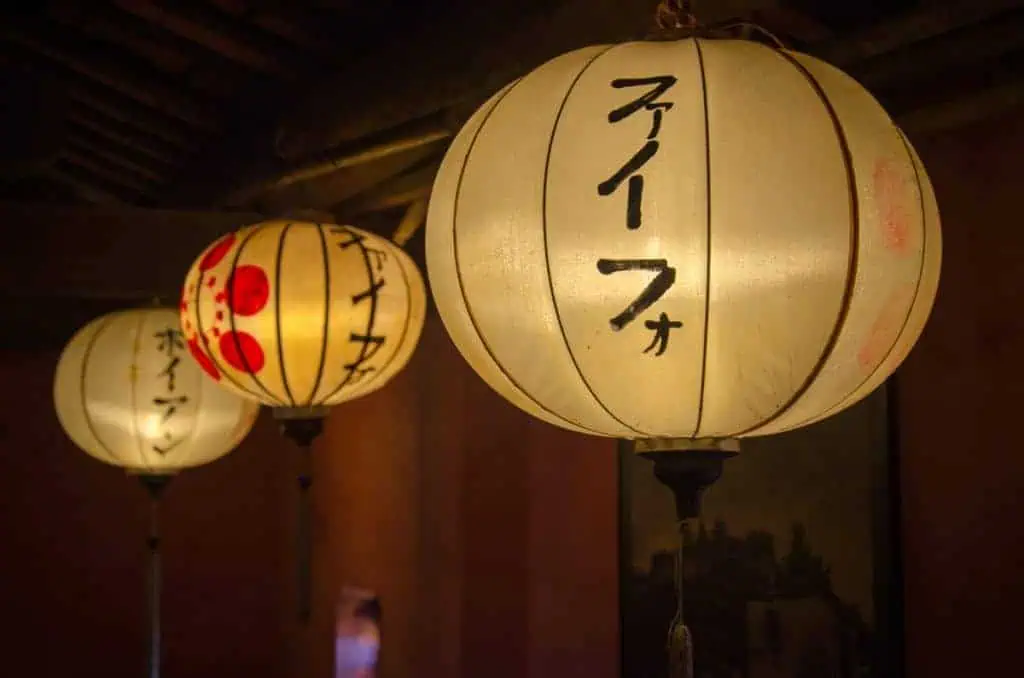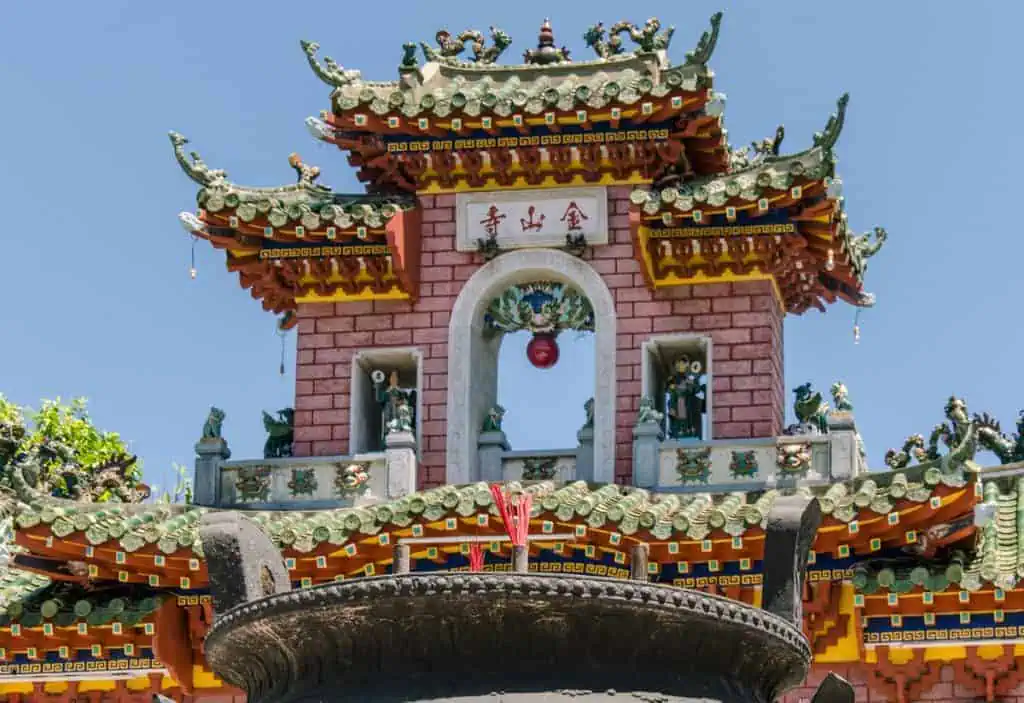With so many places to visit in Hoi An Ancient Town, it may be overwhelming to travelers that are only visiting this beautiful coastal city for a short time. If you are one have 1 day in Hoi An, you should focus your time on these top 5 places to visit in Ancient Town.
Historical Hoi An: Central Vietnam’s Well Preserved Streets and Shops
Check out the top 5 sites in Hoi An
“It looks straight off a postcard!” That could easily be one of the first statements that someone would make when they visit Hoi An, Vietnam. Its streets full of lanterns and colorful colonial houses wow travelers when they set foot in its Ancient Town for the first time. This coastal town definitely holds a long-standing history where both indigenous and foreign influences have played a major role. This results in its various historical sites that make up a unique heritage of Hoi An.
What makes Hoi An history so special? It represents a perfect example of a melting pot that has evolved over time in an international commercial port. Considered the most important harbor in Vietnam during the 16th century, merchants from all over the world (China, Japan, Holland, and India mainly) found shelter in this small town located in Central Vietnam. As the years went by, they forged a rich, diverse culture that still attracts thousands of visitors every year. During the years of Chinese occupation, Hoi An was known as ‘Hai Pho’ (village near the sea in Vietnamese). This later turned into ‘Faifo’ during the Indochina times under the French colonization.
Just by walking around its many historical sites, travelers will realize the tremendous cultural value contained in each aged facade or communal house around the Ancient Town. In fact, its authenticity proves to be a trademark trait since Hoi An has managed to preserve its traditional wooden architecture and townscape. Its original street plan with buildings backing onto the river as well as its layout made up of canals, quays and bridges remain as it once was.

Top 5 Places to Visit in Ancient Town
Visiting Map
Most of the spots are within walking distance so its a good day tour. You could stretch it out and really take some incredible photos and mix with the locals but most people find 1 day is sufficient to take it in.
Now that you know the story behind Hoi An history and what makes it a living museum, let’s explore the top 5 Hoi An historical sites that you shouldn’t miss out when visiting this picturesque coastal town. By the way, you can enter up to five places when buying the ticket (120,000 VND) that gives access to the 22 buildings or points of interest spread around the Ancient Town, so this list is a perfect match to tear all coupons off your tourist pass. That sounds like a lot of places to visit! If you are traveling in a rush, these are custom itineraries so you can get the most of Hoi An in one day.

- Japanese Covered Bridge, the city originally named “Hai Pho” was divided in two parts. Why so? The iconic bridge separated the Japanese community from all the others, mainly Chinese groups that came from different provinces in the land of the Red Dragon. Besides its fascinating architecture, this bridge holds a hidden gem: there is a small pagoda in the middle where fishermen worship the northern god Tran Vo Mac De, considered to be the deity of weather. Make sure your cross this unique bridge and take a sneak peek inside the tiny temple before exploring the most artistic part of town on the other side.
- Phuoc Kien Assembly Hall (46 Trần Phú, Minh An) is the most famous and established hall in the Ancient City. Like we mentioned earlier, many Chinese settled in Hoi An during the 16th and 17th century. These merchants came from different provinces such as Guangzhou, Fujian, Chiu Chow and Hainan and they tended to huddle around pagodas that turned into their assembly halls. in this place, the Chinese from Fujian would celebrate their cultural heritage while paying tribute to their ancestors. Inside this assembly hall, you will find three deities that are all related to fishing (Thien Hau, sea goddess; Than Phong Nhi, who listens to the sound of distant ships; and Then Ly Nhan, who sees those faraway boats). On top of that, the place is beautifully decorated with ancient Chinese structures and, at the back of the hall, there is a large and very impressive dragon statue.

Hoi An traditional Chinese Temple architecture can be seen on the entrance to Phuoc Kien. - Duc An Old House (129 Tran Phu) has done a genuine effort to present some real history and to remain intact despite the fact that 400 years have gone by. The surviving wooden structures scattered around the Ancient Town are original and intact, a living example of the traditional South East Asian trading port and commercial center that Hoi An once was. Unfortunately, many of these old houses have sold out to the tourist industry and turned into restaurants, cafes, bars, tailors or souvenir shops. A nice step back in time, this building from 1850 portrays what life would be like in Hoi An two or three hundred years ago when this family hosted the most successful bookshop in central Vietnam selling renowned Vietnamese and Chinese texts along with the works of foreign political figures at the time. If you are lucky enough to meet one of the family descendants, they will show you around enthusiastically and tell you tales of their childhood times spent in this ancient house.
- Cam Pho (Communal House of the Cantonese Chinese Community)(52 Nguyễn Thị Minh Khai) is one of the oldest structures in the village (more than 200 years old) and an intrinsic part of the merchant heritage of this town. Communal houses in Vietnam used to be not only a place of worship but also an administrative center to hold meetings of the village’s officials. These buildings helped preserved the deep-rooted culture and served as meeting points for holding cultural activities and celebrations. Among the 23 communal houses in Hoi An, located about 100 meters away from the aforementioned Japanese Covered Bridge, this communal house worships the local golds of the village and its ancestors, thus its Vietnamese name Cam Pho Huong Bien (Ancestors of Cam Pho). If shopping in the vicinity, just enter and explore this colorful house that looks more like a temple nowadays. Plus there aren’t many tourists inside which makes the visit more enjoyable and peaceful. (Check out our take on Vietnam Houses.)
- Thanh Ha Terracota Park is located in Than Ha Pottery Village -3km west of the Ancient Town of Hoi An. It might not be a historical site itself but it does represent the long-standing pottery tradition that craftsmen have developed over the years in Central Vietnam. In fact, this village became famous due to the distinctive Ying-Yang titles that fill many roofs in the old city of Hoi An. Apart from all the interesting terracotta models, ranging from unique artworks to impressive miniature models of world buildings and monuments, the architectural design of the park truly makes this place worth seeing. Ride a bicycle from the Ancient Town to the Terracotta Park to make the visit even more adventurous while you soak in all the green scenery and surroundings of Hoi An. Besides the exhibits, visitors can also take part in the experience and make pieces of pottery themselves.
We include the individual maps of the 5 places to visit in Ancient Town below to help you navigate more easily:
-
Map to Japanese Covered Bridge
-
Map to Phuoc Kien Assembly Hall (46 Tran Phu)
-
Map to Duc An Old House(129 Tran Phu)
-
Map of Cam Pho (52 Nguyen Thi Minh Khai)
-
Map to Thanh Ha Terracota Park
What are your favorite historic places in Hoi An? Any other sites that we should include on this list? Let us know about the must-see spots that you would recommend visiting in this picturesque coastal town. If you stay longer in Hoi An, you may want to find the best tailors in Hoi An.
If you’re looking for something unique to do in Hoi An, you might consider booking one of the unique experiences offered by XO Tours. Both our morning motorbike and evening walking tours take guests far outside the touristy old town and into the picturesque Cam Kim countryside where guests will have a chance to visit the local people in their homes and places of work. You can learn more about both the “Dinner with the Nguyens” and “Riding with the Nguyens” tours by checking out their respective info pages in the footer below.









